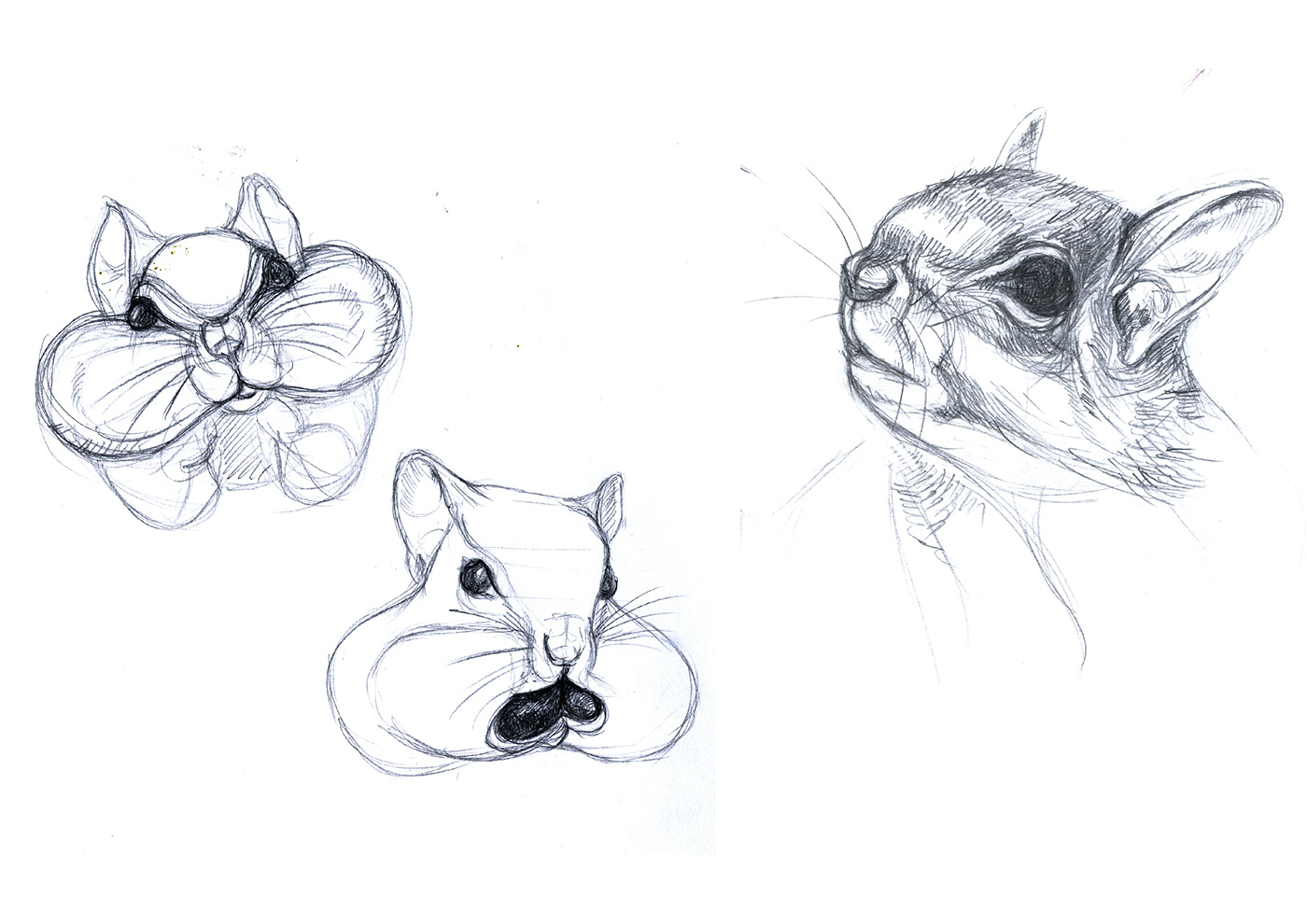Squirrel
A Test-tér-jel feladatomhoz a mókust választottam a tervezésem alapjául. Egy kisebb és egy nagyobb elemet kellett készíteni. Ezeknek kommunikálniuk kellett egymással, formai kapcsolattal. Sok elemző rajzot készítettem az emberi test és a mókus anatómiájáról is egyaránt. Fő szempontok voltak a választott állat jellegzetességeit megidézni, kinetikus; „velem mozgó”; mozgatható legyen, az emberi test anatómiájából adódó rögzítési pontok használata. A tervezéskor az állat pofazacskóját és a farkát emeltem ki. A nagyobbik elemnél a mókus farkának azt a tulajdonságát ragadtam meg, hogy az állat magára tudja borítani tetőtől talpig. A pofazacskónál pedig, annak bővíthetőségét. A modellt papírból készítettem hajtogatással. Rögzítési pontok a fejemen, lábamon, vállamon és a füleimen voltak.
As a basis of my body-space-sign task I chose a squirrel. I had to design a smaller and a larger component. Those two components had to communicate with each other based on their shapes. I created several analytical drawings both on human and on the squirrel's anatomy. My crucial aim was to pinpoint the animal's characteristics in a kinetic way – they should be able to move with my body, i. e. be movable along some points of fixation which are designated by the anatomy of the human body.
When planning, I put emphasis on the animal's cheeks and on its tail. Working on the larger component I was elaborating on the feature that this animal is capable of lapping its whole body with its tail. In regard of its cheeks it was important to show their extendibility. The model was made of paper which I was folding. The points of fixation were on my head, my legs, my shoulders and my ears.

Elemző rajzok. Emberi anatómiából adódó rögzítési pontok lehetőségei.


Hajtogatási elve és struktúrája.

Scale-modell

Thank you for watching!


